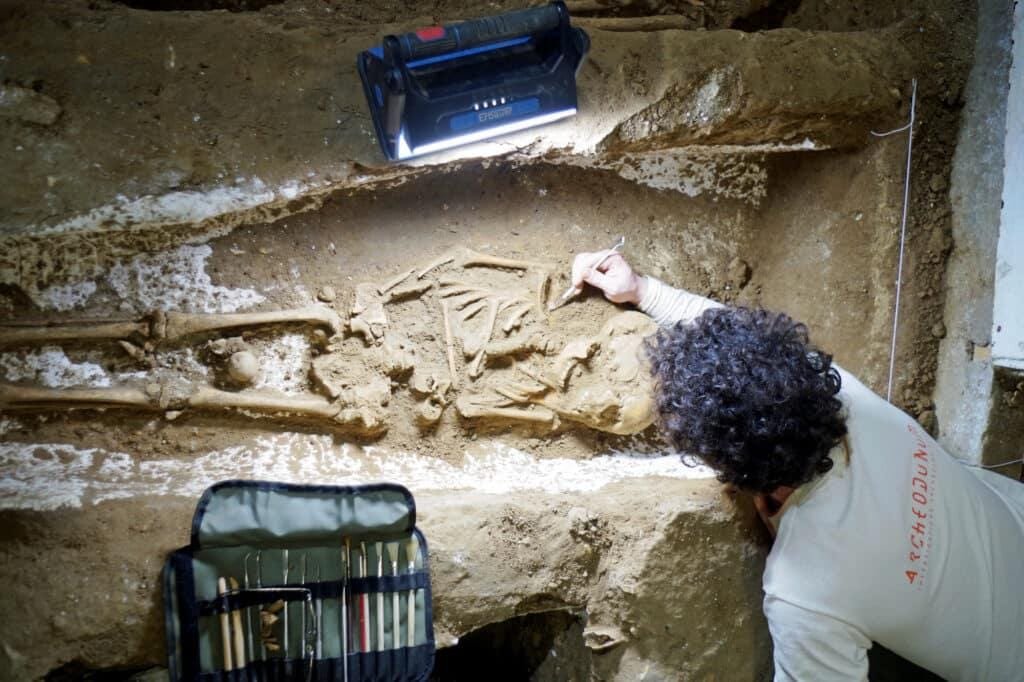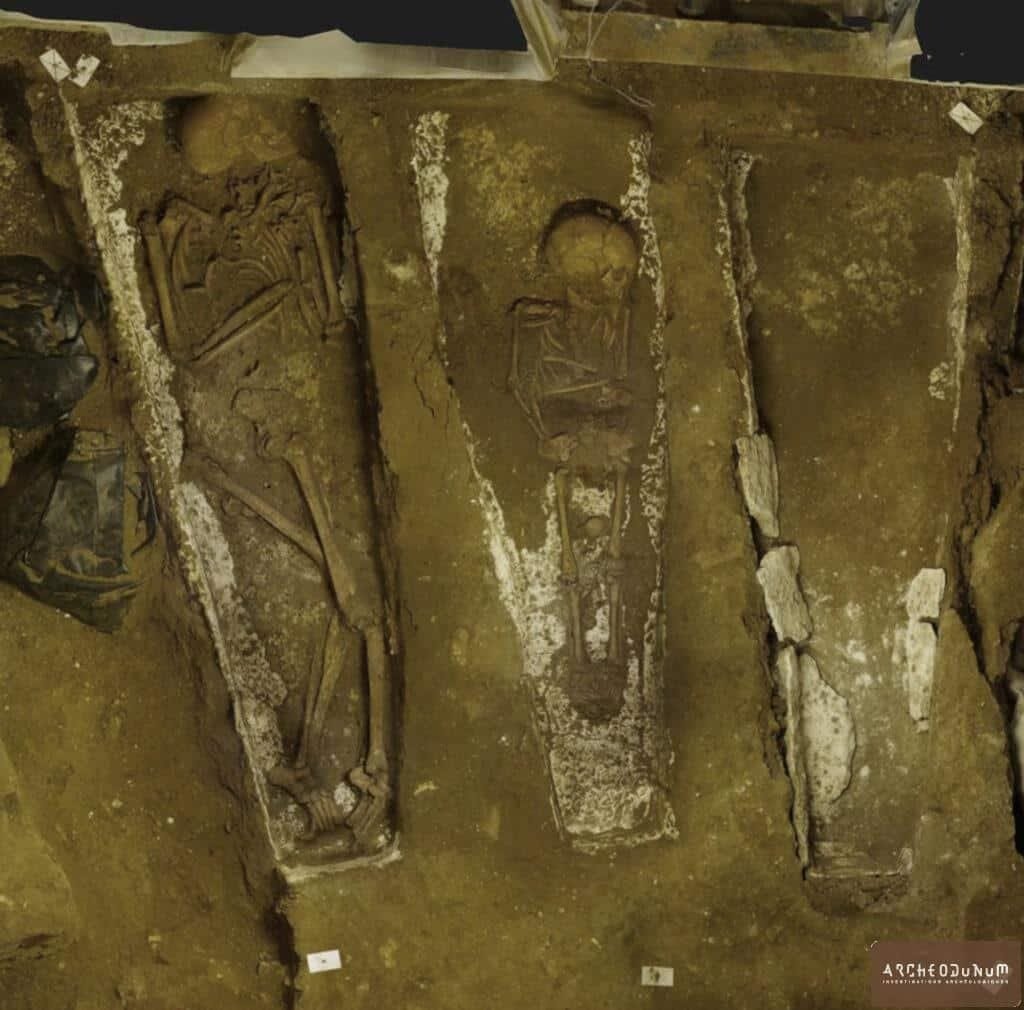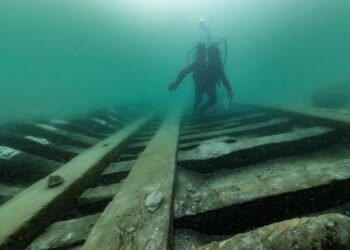A homeowner in the Montconseil neighborhood of Corbeil-Essonnes, a southern suburb of Paris, stumbled upon a skeleton while renovating his basement in the winter of 2023. This unexpected find led to the unearthing of an ancient cemetery that had been in use for roughly 700 years, with burials dating as far back as the 3rd century CE, during the Late Roman period.

The initial discovery prompted archaeologists from the French archaeology company Archaeodunum to conduct a full excavation, uncovering 38 graves in a four-room area spanning 52 square meters. The research, commissioned by the Regional Archaeology Service of Île-de-France, revealed that the site had been used as a burial ground from Late Antiquity to the early Middle Ages, with the most recent grave dating to the 10th century.
This area had long been suspected to hold medieval graves, as scholars had previously identified it as the location of the Notre-Dame-des-Champs chapel, which was built in the 7th century. However, the discovery of much older graves was unexpected. Archaeologists believe that the chapel itself was constructed on the ruins of a pagan temple dedicated to a spring, although no trace of the temple or the chapel has been found to date.
The cemetery appears to have served as a burial ground during the Roman Empire and continued to be used throughout the Merovingian period, which lasted from 476 to 750 CE. During the Roman period, the dead were buried lying on their backs in wooden enclosures that have since rotted away. In contrast, the 10 graves from the Merovingian period were more elaborate, with the bodies placed in plaster sarcophagi, which were arranged side by side in a fan-shaped pattern. According to Archaeodunum, some of these sarcophagi were originally covered by soft stone blocks featuring carved motifs, such as rosettes and crosses—symbols that were common on Merovingian tombs and early Christian places of worship.

The burial site contained both Roman-era and Merovingian graves, demonstrating that burial practices evolved significantly over time. The Roman graves were simple, with the deceased placed in wooden coffins, whereas the Merovingian graves were more ornate, though none of the sarcophagi at this site were decorated—an unusual finding since Merovingian tombs often contain multiple individuals and intricate carvings.
Despite several rocky outcrops in the basement area, the graves were arranged in parallel rows. The skeletons, now being studied in a laboratory, will be analyzed to determine the sex, age, and health of the individuals at the time of their deaths. Archaeologists hope that the findings will provide a deeper understanding of the population that lived near the site during the transition from the Roman Empire to the medieval period.
This discovery is not the first time burials have been found in the Montconseil neighborhood. Since the 19th century, scholars had known about the existence of medieval graves in the area, but this is the first time the cemetery has been thoroughly studied. The current excavation is part of a broader effort to better understand the history of the region, particularly during Late Antiquity and the early Middle Ages.























